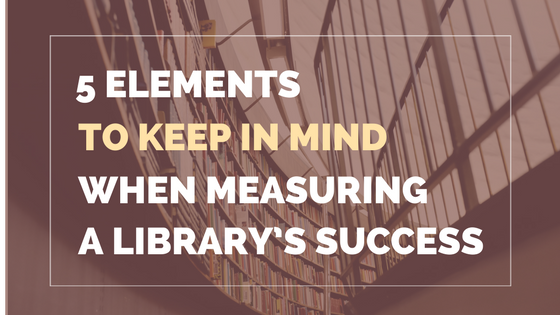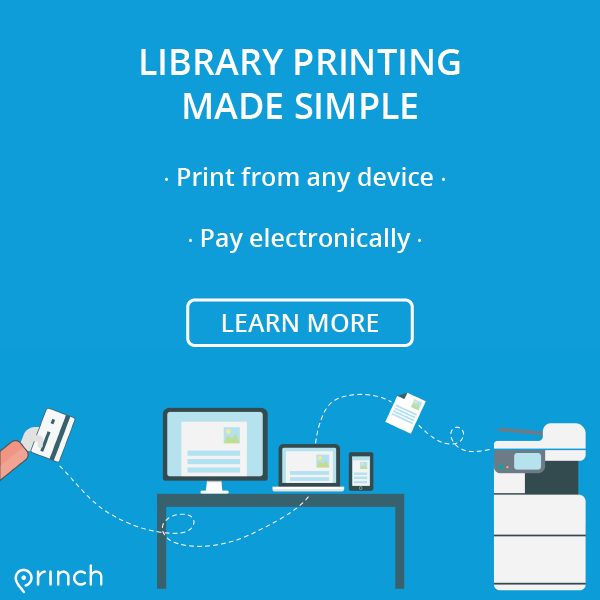Every library should have some key performance indicators that help evaluate the effectiveness of its strategy. Yet, libraries can struggle in proving their importance to policy makers and to the community.
As we analyzed the library trends of 2017, it is clear that the focus of libraries and the challenges they face have remained the same as in the previous years: the continuous need to involve the whole community in the library’s activity and to target the services to their changing needs and also the imperative need to keep up with the tech changes nowadays.
So, how can libraries measure their success in this challenging time when their very existence is being questioned? What makes a library successful?
How can #libraries measure their success in this challenging time when their very existence is being questioned? Share on X1. Collections
The library has a crucial role to invest in its collection, especially since the fake news phenomenon is becoming more and more prominent. As our readers emphasized in our previous posts, “library collections are foundational to being able to build successful services and communities” (Amy Brunvand from American Libraries Association) and if “libraries put less emphasis on their collection, people will have less of a reason to visit the library” (Jim Weinheimer – a library advocate).
Classical metrics that show the collection size and the number of materials circulated every year is still a great way to show the volume of resources a library has and how useful it is to its users. A higher number of circulated materials means that the library’s collection is useful and reliable for their visitors and therefore necessary for their growth.
2. Services and programs
Some services and programs are developed using the library’s collection, such as literacy programs, skills development programs or reading programs but there are many other services focused on developing technical skills, digital learning skills or civic participation. Therefore, libraries should also investigate the services and programs effectiveness when evaluating the library’s performance.
#libraries should also investigate the #services and #programs effectiveness when evaluating the library’s performance. Share on XMetrics such as the number of programs held, program attendance and service use are valuable when showing the footfall in libraries because as Marian T. Keyes from dlr public libraries points out: “the more programs the library does, the more it will be on the map and people go to them with ideas as they know they have excellent footfall”.
Have your say on how Hertfordshire library services are managed in the future in our Inspiring Libraries consultation. From today you can fill in the short survey and share your opinion https://t.co/gAzIt1QV7c pic.twitter.com/2Zmrr7nx2m
— Herts County Council (@hertscc) January 8, 2018
3. Users and communities
Success isn’t simply showed in volume metrics by getting more books read and more people to come to the library for a program they liked once. The true value of the library can be seen when the one-time visitors become library users and visit the library repeatedly.
The true #value of the #library can be seen when the one-time #visitors become library users and visit repeatedly. Share on XTo measure the impact a library has on the community and find out how well it can adapt to better fit their changing needs, libraries need to know how successful their efforts are in the eyes of the public. As Kathy Dempsey points out in our talk with her, “rather than guessing what programs and classes your citizens want, survey them and get some real data. That’s how you keep from creating a program that only 3 people show up to.”
What other fantastic way to measure the outcome and success of the library’s activity, if not ask for people’s direct feedback? Metrics such as user satisfaction, user participation, user support, user development, community engagement, and community produced projects are a great indicator to find out what are the benefits the attendants perceive from a program or activity they participated in at a library.
As a plus, sharing with the whole community the positive feedback libraries get from the respondents is another fantastic way to demonstrate the great impact the library brings to its members.
4. Technology
Technology represents one of the most important assets a library has but at the same time it is the most costly for the library’s budget. Although, it is only with the help of technology that libraries are now able to collect better data that will ultimately help them determine which services are the most popular. This is why proving the effectiveness of technology usage in ensuring the library’s success is essential.
It is only with the help of #technology that #libraries are now able to #collect better data that will ultimately help them determine which #services are the most popular. Share on XFrom measuring the volume of the online resources, the online circulation, the website traffic, the user engagement or the technology usage inside the library’s facility, librarians can find concrete answers about the impact of the technology used at the library.
Good morning Port Moody – our library is open again!
It’s still a bit of a work in progress but they have some great updates in technology.
Congratulations to the @PoMoLibrary staff for all their hard work. Welcome back! pic.twitter.com/8FsTPFjDz9— City of Port Moody (@CityofPoMo) January 8, 2018
5. Staff
The staff represents the heart of the library and it is one of the most important factors when improving performance because, like Liz McGettigan says in our discussion with her, “library staff are the trusted faces of local government and service millions of taxpayers choose to use. Our staff know their communities and are passionate about learning, living and contributing”.
Also, by constantly observing and managing the stream of visitors into the library, the library staff has access to a broad spectrum of insights regarding the public’s needs and problems. This knowledge represents the best source when thinking how to improve the library’s activity.
The #librarystaff has access to a broad spectrum of insights regarding the public’s needs and problems. #librarylife Share on XMetrics such as the number of trained staff, the time to complete a task, the number of training programs available to the staff and most importantly the staff satisfaction can be easily used to measure staff motivation, professionalism and dedication and their influence on the library’s success.
When assessing the effectiveness, #libraries need to analyze their activity as a whole whilst taking into consideration all the elements that create a #library. Share on XTo conclude, there are tens, if not hundreds, of ways to get concrete and specific measures about the library’s success. Thus, when planning to analyze the performance and assess the effectiveness, libraries need to analyze their activity as a whole whilst taking into consideration all the elements that create a library.
What tools are you using to measure the library’s success? Let us know in the comments!
Find us on social media via Facebook or Twitter and read the latest developments in libraries from around the world.
Recent posts
Green Libraries: How Sustainable Design is Shaping the Future of Public Libraries
In this week's Princh Library Blog post, recurring guest writer Sam L. Bowman discusses an ever so important topic: sustainable design and [...]
Librarians Supporting Digital Literacy in the Community
In this week's Princh Library Blog, Nina Grant covers why digital literacy is important, the variety of ways in which librarians are supporting [...]




Good job. well done Petra. This piece is very helpful
Uwaebuka Madu
PhD student from Nigeria